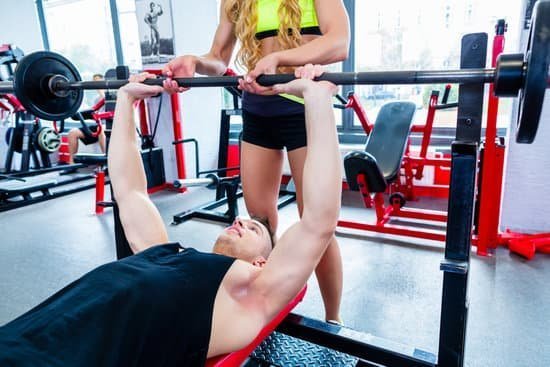When it comes to physical fitness, one of the key elements that is often overlooked is the importance of different preparatory exercises. These exercises play a crucial role in not only enhancing performance but also in preventing injuries during workout sessions. Whether you are a seasoned athlete or just starting your fitness journey, incorporating a variety of preparatory exercises into your routine can make a significant difference in your overall results.
Preparatory exercises can range from simple warm-up routines to more targeted activation exercises aimed at specific muscle groups. Each type of exercise serves a unique purpose in getting your body ready for the main workout ahead. Warm-up exercises, for instance, help elevate heart rate and increase blood flow to muscles, reducing the risk of strains and sprains. On the other hand, activation exercises help in priming certain muscles for optimal engagement during training.
In this article, we will delve into the various types of preparatory exercises that are essential for any fitness regimen. From stretching routines that improve flexibility to mobility drills that enhance range of motion, we will explore how each exercise contributes to better overall performance and injury prevention. So, let’s dive into the world of preparatory exercises and discover how they can take your fitness journey to the next level.
Warm-Up Exercises
Here are some essential warm-up exercises that you can include in your fitness regimen:
- Jumping Jacks: This classic exercise helps increase heart rate and warm up major muscle groups.
- Arm Circles: Rotating your arms in small and large circles can loosen up shoulder joints and improve blood flow to the upper body.
- Leg Swings: Standing on one leg and swinging the other leg back and forth can help improve flexibility in the hip flexors and hamstrings.
By incorporating these warm-up exercises before engaging in more strenuous physical activities, you can prepare your body for optimal performance while reducing the risk of strains, sprains, or other injuries. It is important to customize your warm-up routine based on the specific demands of your workout or sport to maximize its effectiveness. Remember that taking a few extra minutes to properly warm up can make a significant difference in how you feel during and after exercise.
In addition to preventing injuries, warm-up exercises also help in improving overall performance by enhancing muscle activation, coordination, and reaction time. By priming your body with a series of dynamic movements before diving into intense physical activity, you can better prepare yourself mentally and physically for the challenges ahead.
Whether you are a seasoned athlete or just starting out on your fitness journey, incorporating proper warm-up exercises is essential for achieving optimal results and maintaining long-term health and well-being.
Stretching Routine
Stretching is a crucial component of any preparatory exercise routine in physical fitness. It plays a vital role in improving flexibility, preventing muscle stiffness, and enhancing overall performance during workouts. By incorporating various stretching exercises into your warm-up routine, you can prepare your muscles and joints for the upcoming physical activity, reducing the risk of injuries and ensuring optimal function.
Static Stretching
One common type of stretching exercise is static stretching, where you hold a specific position that elongates the muscle for a set period of time. This helps improve flexibility by gradually lengthening the muscle fibers and increasing the range of motion. Some examples of static stretches include hamstring stretches, calf stretches, and quadriceps stretches. Performing these stretches before engaging in more intense physical activities can help prevent strain or injury.
Dynamic Stretching
Dynamic stretching involves continuously moving your body through a full range of motion to mimic the actions you will be performing during your workout. This type of stretching helps increase blood flow to the muscles, improve coordination, and enhance neuromuscular function. Examples of dynamic stretches include leg swings, arm circles, and high knees. Incorporating dynamic stretching into your routine can effectively prepare your body for more vigorous exercise while reducing the risk of muscle tears or strains.
Proprioceptive Neuromuscular Facilitation (PNF)
Another effective stretching technique is Proprioceptive Neuromuscular Facilitation (PNF), which involves contracting and relaxing specific muscles to improve flexibility rapidly. PNF techniques often involve a partner who assists in applying resistance during stretches to enhance their effectiveness.
This type of stretching can help target specific muscle groups more intensely than traditional static or dynamic stretches, leading to significant improvements in range of motion and muscle elasticity over time. Integrating PNF stretching into your preparatory exercises can help you achieve better results in terms of flexibility and overall physical performance.
By including a variety of stretching exercises like static, dynamic, and PNF stretches in your preparatory routine for physical fitness activities, you can optimize muscle function, prevent injuries, improve flexibility, and enhance overall performance. Remember that proper technique and consistency are key when it comes to reaping the benefits of these exercises.
Stretching before every workout helps prime your body for movement, allowing you to get the most out of your training sessions while protecting yourself from potential harm caused by tight muscles or limited range of motion.
Mobility Drills
One popular mobility drill is the hip flexor stretch, which targets the muscles at the front of the hip and helps improve hip mobility. This exercise involves kneeling on one knee while maintaining an upright posture and leaning forward to feel a stretch in the front of your hip. By performing this drill regularly, you can enhance your hip flexibility, which is essential for various movements such as running, squatting, and jumping.
Another effective mobility drill is shoulder dislocations, which aim to increase shoulder mobility and reduce stiffness in the upper body. This exercise involves holding a resistance band or towel with both hands and slowly moving it overhead and behind your back in a circular motion. Shoulder dislocations help improve shoulder rotation and stability, benefiting individuals involved in activities that require overhead movements like weightlifting or rock climbing.
| Mobility Drill | Description |
|---|---|
| Hip Flexor Stretch | Kneel on one knee, lean forward to stretch front of hips |
| Shoulder Dislocations | Hold resistance band/towel with both hands, move overhead in circular motion |
Activation Exercises
In addition to preventing injuries and enhancing performance, activation exercises can also help individuals improve their mind-muscle connection. By consciously engaging and activating targeted muscle groups through specific movements, individuals can develop a better awareness of how their muscles work and function. This increased awareness can lead to more efficient movement patterns during workouts, ultimately improving strength, power, and coordination. Incorporating activation exercises into a warm-up routine can amplify the benefits of other preparatory exercises in physical fitness.
It is important to customize activation exercises based on individual needs and goals. Different workouts may require targeting various muscle groups depending on the focus of the training session. For example, if an individual is planning a lower body workout that involves heavy squats, activation exercises focusing on the glutes, hamstrings, and quadriceps would be beneficial. By tailoring activation exercises to specific workout plans, individuals can ensure they are adequately prepared for the demands of their training regimen.
| Types of Activation Exercises | Benefits |
|---|---|
| Glute Bridges | Target glute muscles for improved hip stability |
| Leg Raises | Engage core muscles for better spinal alignment |
| Clamshells | Activate hip abductor muscles to support lateral movements |
Balance and Coordination Exercises
Balance and coordination are key components of physical fitness that often get overlooked in workout routines. Incorporating balance and coordination exercises into your preparatory routine can have numerous benefits, not just for athletic performance but also for everyday activities. These exercises help improve stability, body control, and proprioception, which is the body’s awareness of its position in space.
Benefits of Balance and Coordination Exercises
Balance and coordination exercises challenge your body to maintain control and stability in various positions and movements. By engaging different muscle groups simultaneously, these exercises help improve overall body awareness and control. Enhanced balance can reduce the risk of falls and injuries, especially as you age. Additionally, better coordination can lead to improved performance in sports and activities that require precise movements.
Types of Balance and Coordination Exercises
There are many different types of balance and coordination exercises that you can incorporate into your workout routine. Some examples include single-leg stands, heel-to-toe walks, stability ball exercises, agility drills, and proprioceptive training. These exercises can be modified to suit all fitness levels, from beginners to advanced athletes. Mixing up the variety of exercises will challenge your body in new ways and prevent plateaus in progress.
Integrating Balance and Coordination Exercises Into Your Routine
Including balance and coordination exercises at the beginning of your workout routine as preparatory exercises can help activate stabilizing muscles and prime your body for more intense physical activity. Start with basic exercises focusing on maintaining balance for short periods before progressing to more challenging movements that require greater stability. Consistency is key, so aim to incorporate these exercises regularly to reap the full benefits of improved stability, body control, and overall physical performance.
Plyometric Drills
Here are some key benefits of including plyometric drills in your preparatory exercise routine:
- Increased Power: Plyometric exercises target fast-twitch muscle fibers, which are responsible for explosive movements. By incorporating plyometric drills like jump squats, bounding, and box jumps, you can significantly improve your power output.
- Enhanced Speed and Agility: Plyometrics help improve the efficiency of muscle contractions, enabling you to move quicker and change direction more rapidly. This can be particularly beneficial for athletes participating in sports that require rapid changes in movement direction.
- Improved Jumping Ability: Plyometric drills such as depth jumps and squat jumps can boost your vertical jump height by strengthening the muscles involved in jumping. This can be advantageous for athletes in sports like basketball or volleyball.
Incorporating plyometric drills into your workout routine should be done with caution to prevent injuries. It is essential to start with basic plyometric exercises and gradually progress to more advanced variations as your strength and coordination improve. Additionally, proper form and technique are crucial when performing plyometric drills to maximize their benefits while minimizing the risk of injury.
Cool-Down Routine
A proper cool-down routine is an essential part of any physical fitness regimen, as it plays a crucial role in aiding recovery and reducing muscle soreness. After engaging in strenuous physical activity, such as a workout or sports practice, your body needs time to gradually return to its normal state.
Cooling down allows your heart rate to slowly decrease, helps prevent the build-up of lactic acid in your muscles, and promotes the removal of waste products from your system.
One effective method to include in your cool-down routine is low-intensity cardio exercises, such as walking or light jogging. This helps to gradually lower your heart rate and promote circulation throughout the body, which aids in flushing out metabolic byproducts from your muscles.
Additionally, stretching can also be incorporated during the cool-down phase to help maintain flexibility and prevent muscle stiffness post-exercise. By incorporating these elements into your cool-down routine, you can help speed up the recovery process and reduce the likelihood of experiencing muscle soreness the following day.
Incorporating a proper cool-down routine into your fitness regimen is not only beneficial for immediate recovery but can also have long-term effects on overall performance. By taking the time to properly cool down after a workout or physical activity session, you are setting yourself up for success in future sessions by ensuring that your body is prepared for optimal performance.
Remember that each individual may require different cooling down techniques based on their fitness level and specific needs, so it’s important to listen to your body and tailor your cool-down routine accordingly.
Putting It All Together
Preparatory exercises play a crucial role in physical fitness by preparing the body for the demands of a workout or sports activity. By incorporating a variety of warm-up exercises, stretching routines, mobility drills, activation exercises, balance and coordination exercises, plyometric drills, and cool-down routines into your fitness regimen, you can improve performance, prevent injuries, and enhance overall conditioning.
To create a comprehensive preparatory exercise routine that targets different aspects of physical fitness, you can start with a dynamic warm-up to increase heart rate and blood flow to the muscles. This can include movements like jogging in place, jumping jacks, arm circles, and leg swings. Following the warm-up, incorporating dynamic stretching exercises such as leg kicks, hip circles, and arm swings can help improve flexibility and range of motion.
For mobility drills, focus on movements that engage multiple joints and muscle groups to enhance coordination and agility. Exercises like spiderman crawls, shoulder circles, and hip rotations are effective for promoting joint mobility. Activation exercises then target specific muscle groups that will be used during your workout or activity. These can include glute bridges, clamshells, band walks, or resistance band leg lifts to activate the muscles properly before engaging in more intense exercises.
Conclusion
In conclusion, it is evident that incorporating preparatory exercises into a fitness regimen is crucial for optimizing physical performance, preventing injuries, and improving overall health. Each type of preparatory exercise plays a vital role in enhancing different aspects of physical fitness, from flexibility and mobility to strength and power.
By including warm-up exercises, stretching routines, mobility drills, activation exercises, balance and coordination exercises, plyometric drills, and cool-down routines in your workout routine, you can ensure that your body is adequately prepared for the demands of exercise.
Moreover, engaging in a variety of preparatory exercises not only helps to prime your muscles and joints but also improves your focus and mental readiness for the workout ahead. By targeting specific muscle groups, improving stability and body control, and developing power and explosiveness through plyometric drills, you can gradually progress towards your fitness goals while minimizing the risk of overuse injuries or muscular imbalances.
Consistency in performing these exercises will not only enhance your physical performance but also contribute to long-term health benefits.
Therefore, whether you are a beginner starting on your fitness journey or an experienced athlete looking to elevate your training sessions, taking the time to incorporate different preparatory exercises in physical fitness should be a non-negotiable part of your routine. Remember that preparation is key to success in any endeavor, and by prioritizing these exercises before each workout, you are setting yourself up for progress, injury prevention, and overall well-being.
Stay committed to this holistic approach to physical fitness and experience the transformative impact it can have on your health and performance levels.
Frequently Asked Questions
What Is Preparatory Exercise?
Preparatory exercise refers to the initial phase of a workout where individuals engage in activities to warm up their muscles, increase heart rate, and prepare their body for more strenuous physical activity. These exercises help prevent injuries and enhance overall performance during the main workout.
What Are the General Physical Preparation Exercises?
General physical preparation exercises are fundamental movements that focus on improving overall strength, flexibility, balance, and coordination. Examples include bodyweight exercises like squats, lunges, push-ups, and planks, as well as dynamic stretches and aerobic activities like jogging or jumping jacks. These exercises lay the foundation for more specific training programs.
What Is the Preparatory Phase of Training?
The preparatory phase of training is the period where individuals focus on developing basic physical qualities to prepare their bodies for more intense and sport-specific training. This phase typically includes general physical preparation exercises aimed at improving endurance, strength, flexibility, and coordination.
By establishing a solid foundation during this phase, athletes can build upon these fundamental skills as they progress through more specialized training programs.

Passionate about providing useful information to anyone with an interest in the field of Personal Training, I strive to pass on to our readers quality information and to answer any questions about Personal Trainers, the work they do and how to become one.





